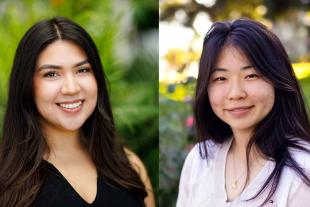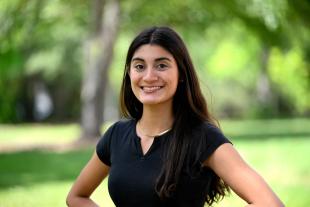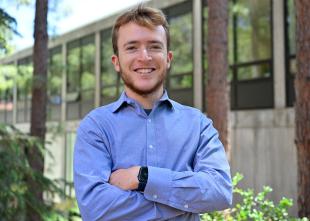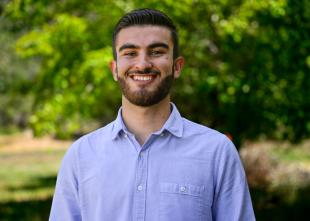Great Grad: Meet Luke Hansen, Kinesiology Major
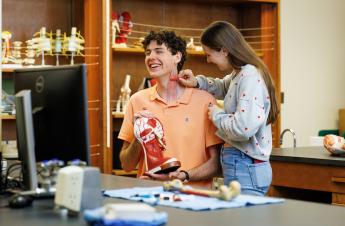
Each year, to celebrate commencement, Cal Poly highlights a group of “Great Grads”: a student from each of the six colleges who are completing an outstanding academic journey and moving on to the next phase of their lives. Luke Hansen is our Great Grad from the Bailey College of Science and Mathematics.
Inspired by his late mother and intent on making a positive impact on his community, Luke Hansen knows exactly where’s he’s headed after graduating from Cal Poly.
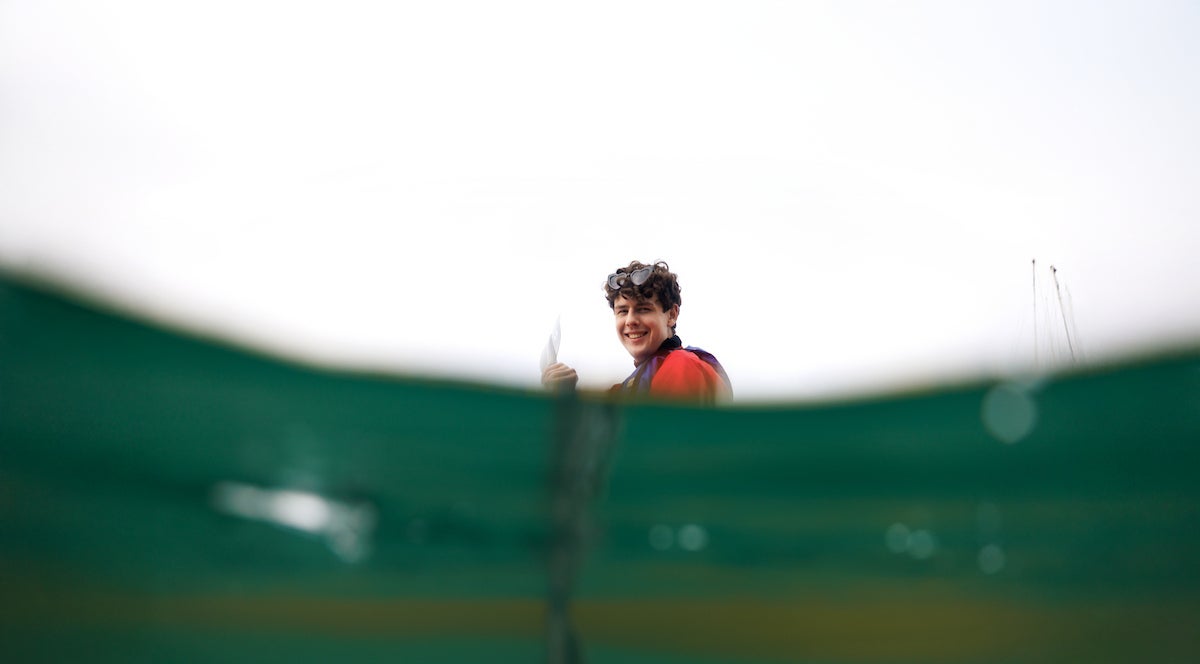
“I’m very clear on my path in medicine,” said the kinesiology major. “I’m very interested in family medicine, primary care, and I know without a doubt that I want to come back to San Luis Obispo County, because we have such a critical need for it”
Hansen, 21, was born and raised near Cal Poly and was among a dozen co-valedictorians that Arroyo Grande High celebrated in June of 2021.
“I would like to dedicate my portion of the speech to my mom, who tragically passed away last week after a 10-month-long fight with leukemia,” he said in his valedictory speech. “Mom, I love you, and I’m so proud of your work. I will continue it going into the future.”
Hansen had planned to follow in Laura Millis-Hansen’s footsteps and become a chiropractor. She operated a local practice for 26 years before she died.
“Growing up, I saw the impact she had,” he said. “So my intent was to follow and do chiropractic as well. Losing her and losing that inspiration really shook my foundation. I was able to prepare myself to begin Cal Poly in the fall, and then I just slowly started to integrate myself with my passions for healthcare, and I saw there’s a greater need for medicine, and I became really involved with the special needs community.”
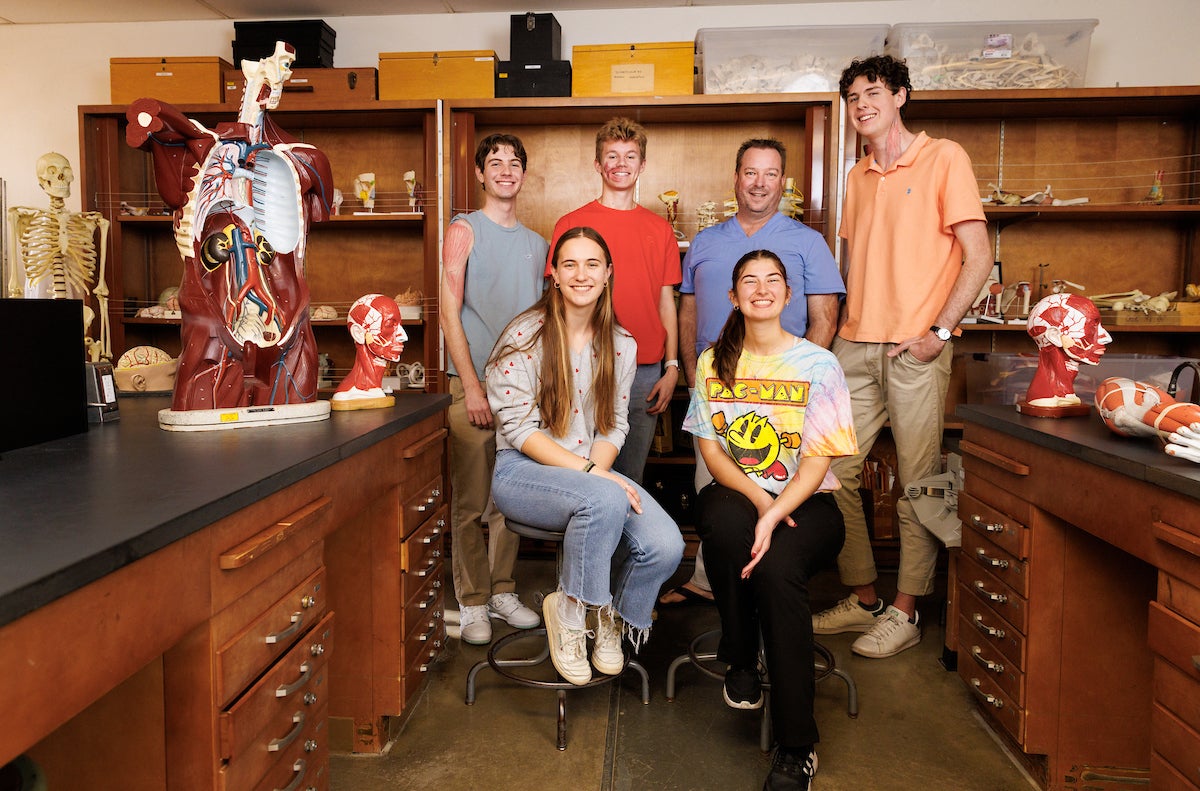
Though he would come to know and be grateful for its Learn by Doing style of education, Hansen said he had practical reasons for choosing Cal Poly: “the care and well-being of myself, my little brother with Down Syndrome, my mother and my family. Cal Poly allowed me to do that.”
He was familiar with the campus as a local resident. But that did not translate to him immediately finding his community within the university as a student — until he found the SLO Newman Catholic Center.
“I found a great community just talking with other people,” Hansen said. “Newman offered a space to make meaningful connections through a shared belief, which helped me feel comfortable in a new environment.”
Hansen also found a welcoming environment across the campus, allowing him to feel safe expressing his LGBTQ+ identity.
“I felt overwhelming acceptance and support at Cal Poly,” he said. “By helping me feel comfortable with my identities, the university gave me the best opportunity to succeed from Day One.”
Hansen excelled academically and made the Dean’s List nine times.
His most impactful mentor was biological sciences lecturer Michael Jones, director of the university’s Human Anatomy Lab that houses Cal Poly’s human cadaver specimens. Hansen made an impression during office hours visits and assisting Jones in the lab, where he was named an “anatomy ambassador” selected for a section that teaches high school students using cadaver specimens prepared by Cal Poly students. He also took part in the Advanced Human Gross Anatomy Lab, the summer elective Jones oversees where students perform a whole-body human cadaver dissection.
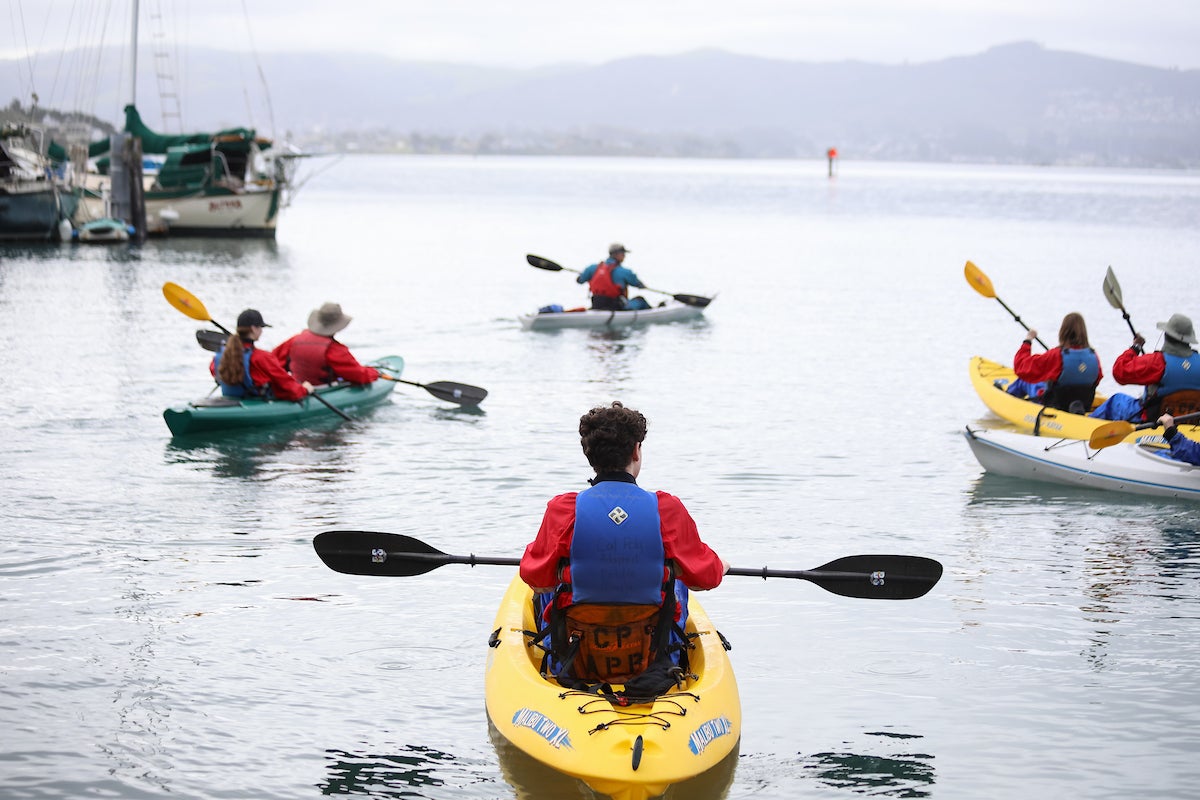
“He let me in as a second-year, which is pretty uncommon,” Hansen said. “And then he invited me back to direct the program my third year. I got to do the summer cadaveric dissection between my second and third year, which is also pretty uncommon.”
Jones green-lighted a senior project Hansen and a friend developed involving dissection of the human neck, in which portions of the students’ project were later adapted into the anatomy curriculum.
“Jones was so pleased with our 30-page paper and poster based on our dissections that he used it in the following term of the anatomy curriculum,” he said. “The dissection was used as a source of education, which was the exact purpose of why we were doing this.”
Hansen was also able to use his anatomy skills teaching a Saturday anatomy lab for students at Allan Hancock College in Santa Maria.
The inspiration he felt from other professors and his peers and friends in the program, was an offshoot of the campus ethos.
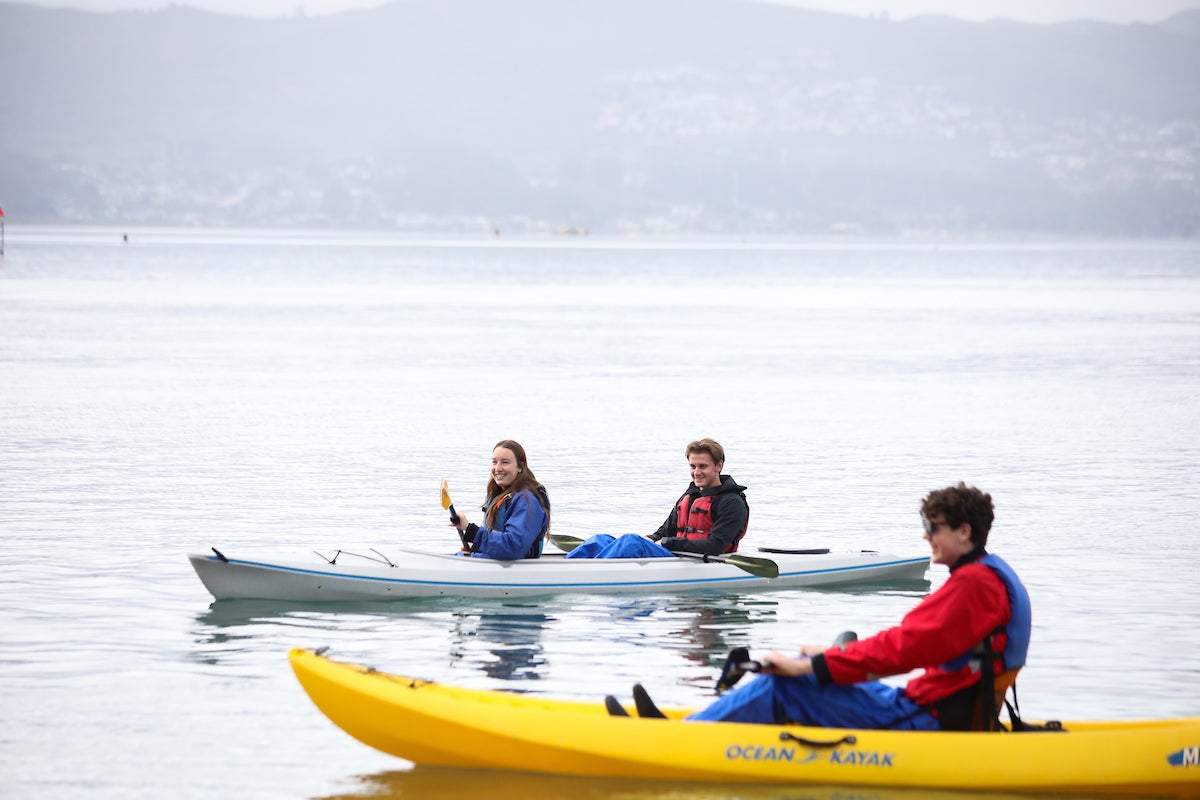
“I have no doubt it’s the Learn by Doing,” he said. “It’s the connecting with professors. It’s the small-classroom, intimate learning environment that gives you these opportunities and helps you grow academically and personally.”
As well, since 2023 Hansen has been a student assistant with the college’s Adaptive Paddling Program, which launched 26 years ago and has used kayaking to connect kinesiology students with community members with physical and mental disabilities.
“For me, it wasn’t about the kayaking,” he said. “It’s about being able to see the impact we were having on these people.
“If you have a disability, you’re always told things you can’t do. It’s never things you can do. It’s crushing. This program allows us to tell people, ‘Because you have paraplegia, quadriplegia and you can’t swim, you think you can’t go out on the water. You’re going to go out on the water to experience something you were told you can’t do.’
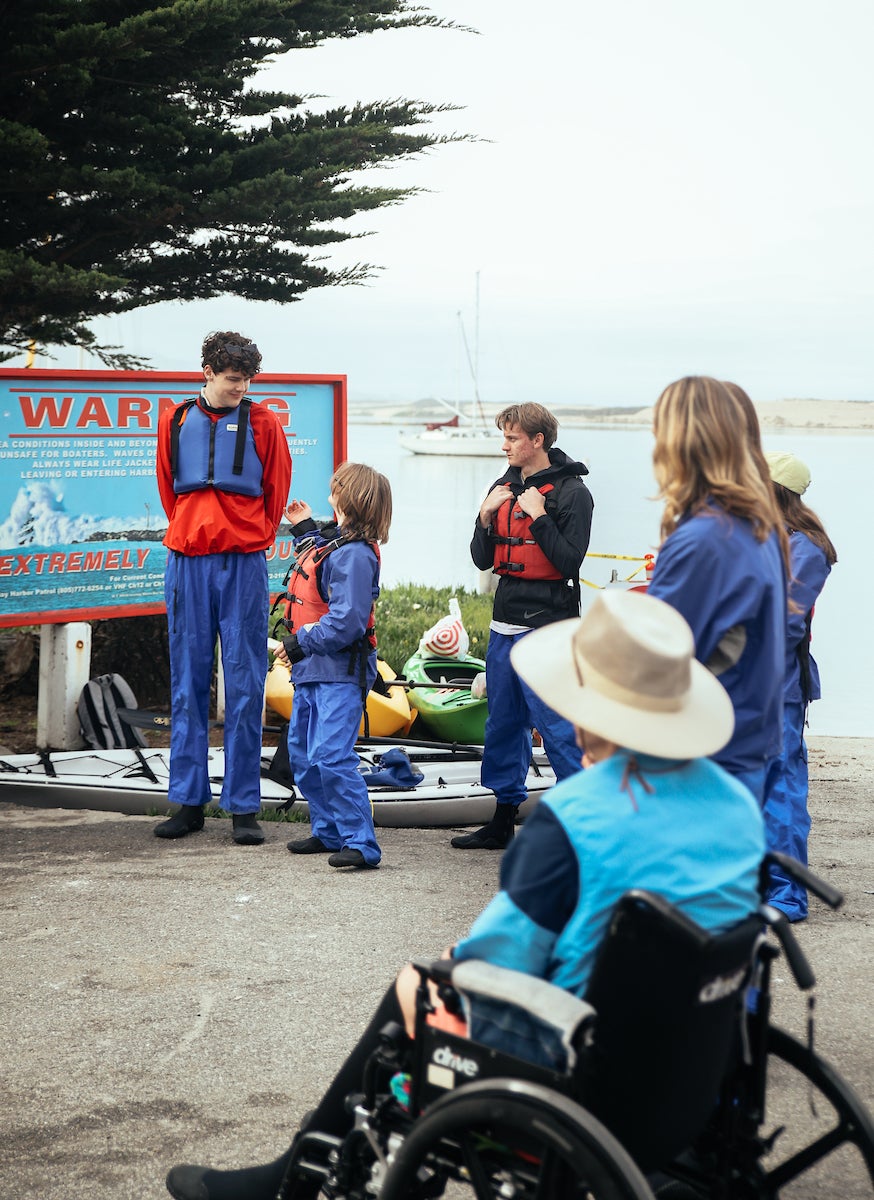
“It can be revolutionary for them that there are these opportunities out there, and their families get to see their loved one being able to experience what was thought to be unreachable. It reminds me so much of my little brother, of all the things he was told he can’t do.”
Hansen has more mountains to climb on his educational journey: four years of classes and clinical experience at hospitals and clinics; the medical licensing exam; and three or more years as a resident in a teaching hospital. He looks forward to the trek.
“I will matriculate at the UC San Diego School of Medicine starting this fall,” Hansen said “I am incredibly fortunate to be offered admission directly out of my undergraduate program, as the average medical matriculant is 25 and has spent one or more years strengthening their applications postgraduation.
“I credit my success to the incredible opportunities at Cal Poly that have prepared me academically and personally on my journey to becoming a physician. I will graduate in 2029.”
Want more Learn by Doing stories in your life? Sign up for our monthly newsletter, the Cal Poly News Recap!

